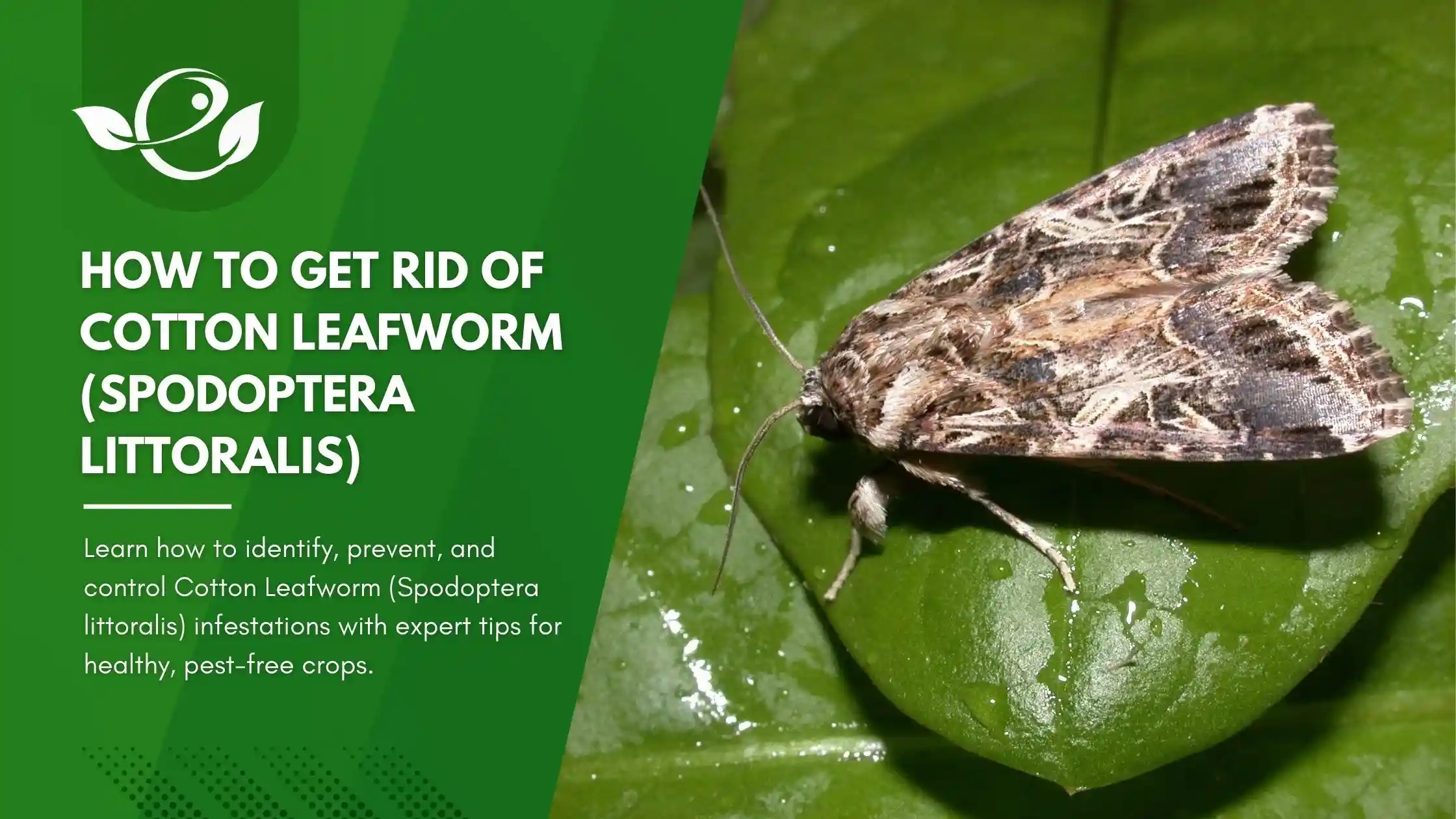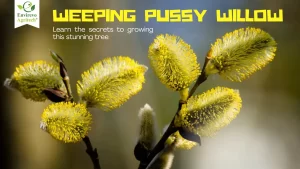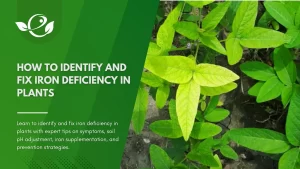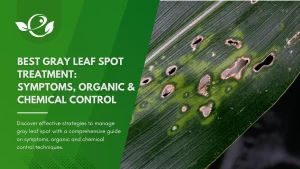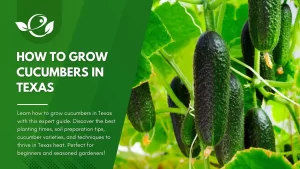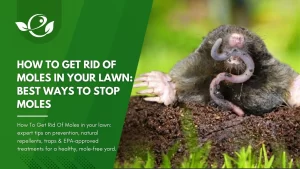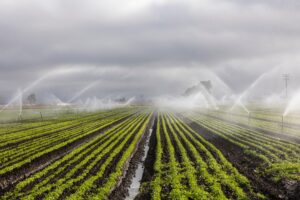Table of Contents
The cotton leafworm, scientifically known as Spodoptera littoralis and commonly referred to as the “Mediterranean Brocade,” is a highly destructive pest that affects cotton and a variety of other crops worldwide. These pests are notorious for their voracious appetite and rapid reproductive cycle, making them a formidable challenge for farmers and gardeners alike. Left unchecked, they can cause significant economic losses due to reduced crop yields and extensive defoliation.
In this guide, we’ll explore how to identify cotton leafworm infestations, implement prevention strategies, and effectively control these pests using a combination of cultural, biological, and chemical methods.
What is the Cotton Leafworm?
The cotton leafworm, Spodoptera littoralis, is a moth species belonging to the Noctuidae family. It is commonly found in tropical and subtropical regions but can spread to temperate zones under favorable conditions. Its lifecycle consists of four stages:
- Eggs: Laid in clusters on the underside of leaves, these eggs hatch within a few days.
- Larvae: The most destructive stage, larvae feed on leaves and stems, causing severe damage.
- Pupae: Larvae pupate in the soil, where they transform into moths.
- Adult Moths: These lay eggs to start the cycle anew, often producing multiple generations in a single season.
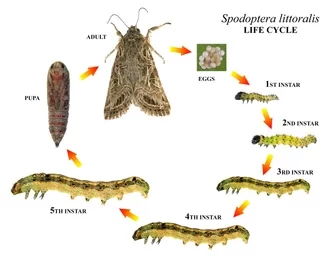
The cotton leafworm targets various crops, including cotton, tomatoes, beans, and other vegetables, making it a polyphagous pest. Its ability to adapt to different environments has earned it the nickname “Mediterranean Brocade”.
Signs of Cotton Leafworm Infestation
Early detection is critical for minimizing damage caused by cotton leafworm infestations. Here are the most notable signs to help you identify their presence:
- Chewed Leaves and Stems: Cotton leafworm larvae are voracious feeders. They create irregular holes in leaves, often leaving only the veins intact, and can chew through young stems. This damage disrupts the plant’s growth and vitality.
- Skeletonized Leaves: In severe infestations, the larvae consume the green parts of the leaves entirely, leaving a skeletal framework behind. This phenomenon, known as skeletonization, reduces the plant’s ability to photosynthesize effectively.
- Visible Larvae: The larvae are easily identifiable by their greenish or brownish bodies with longitudinal stripes. They are usually found on the undersides of leaves during the day, where they remain hidden from predators and sunlight.
- Frass (Insect Droppings): Look for black or brown droppings on leaves and around the base of plants. This frass is a clear indication of active feeding by the larvae.
- Defoliation: In cases of heavy infestations, plants can lose most of their foliage. This defoliation significantly reduces crop productivity, as it impairs the plant’s ability to produce energy.
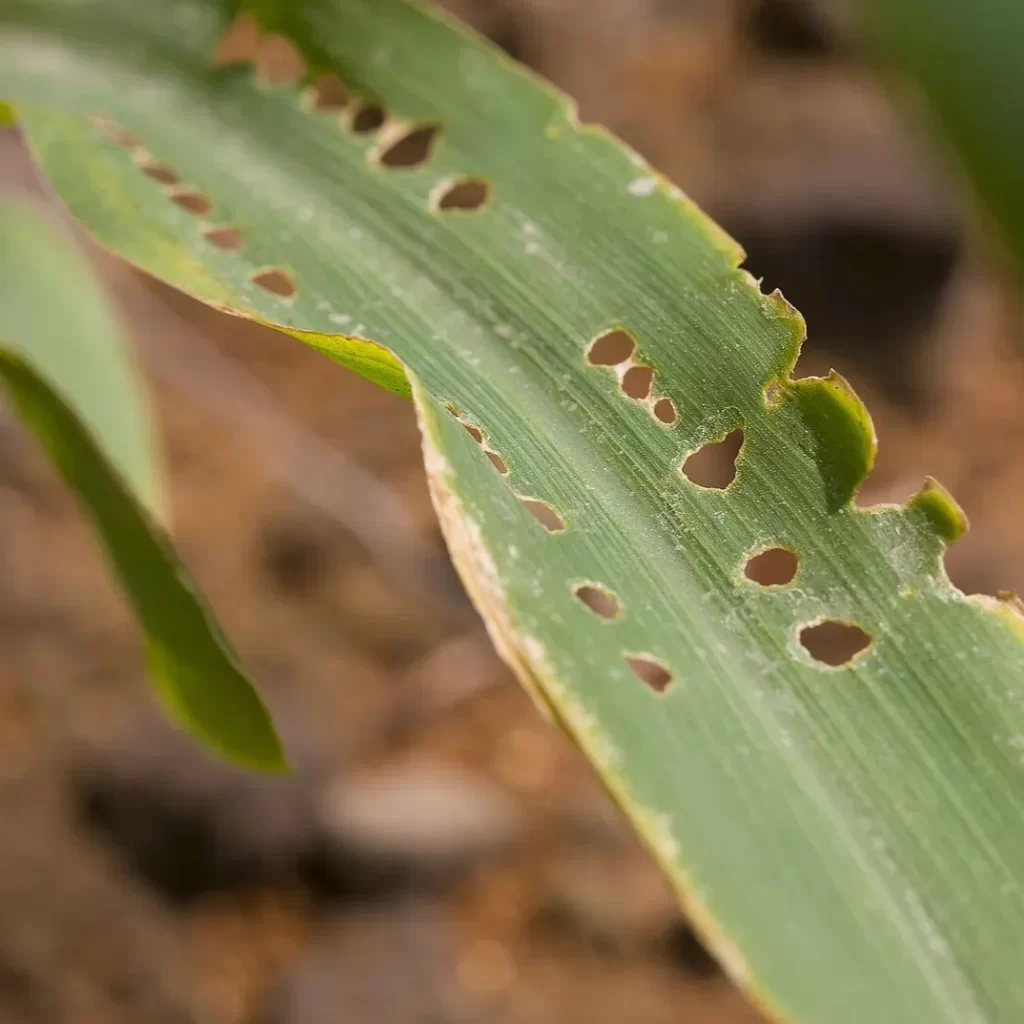
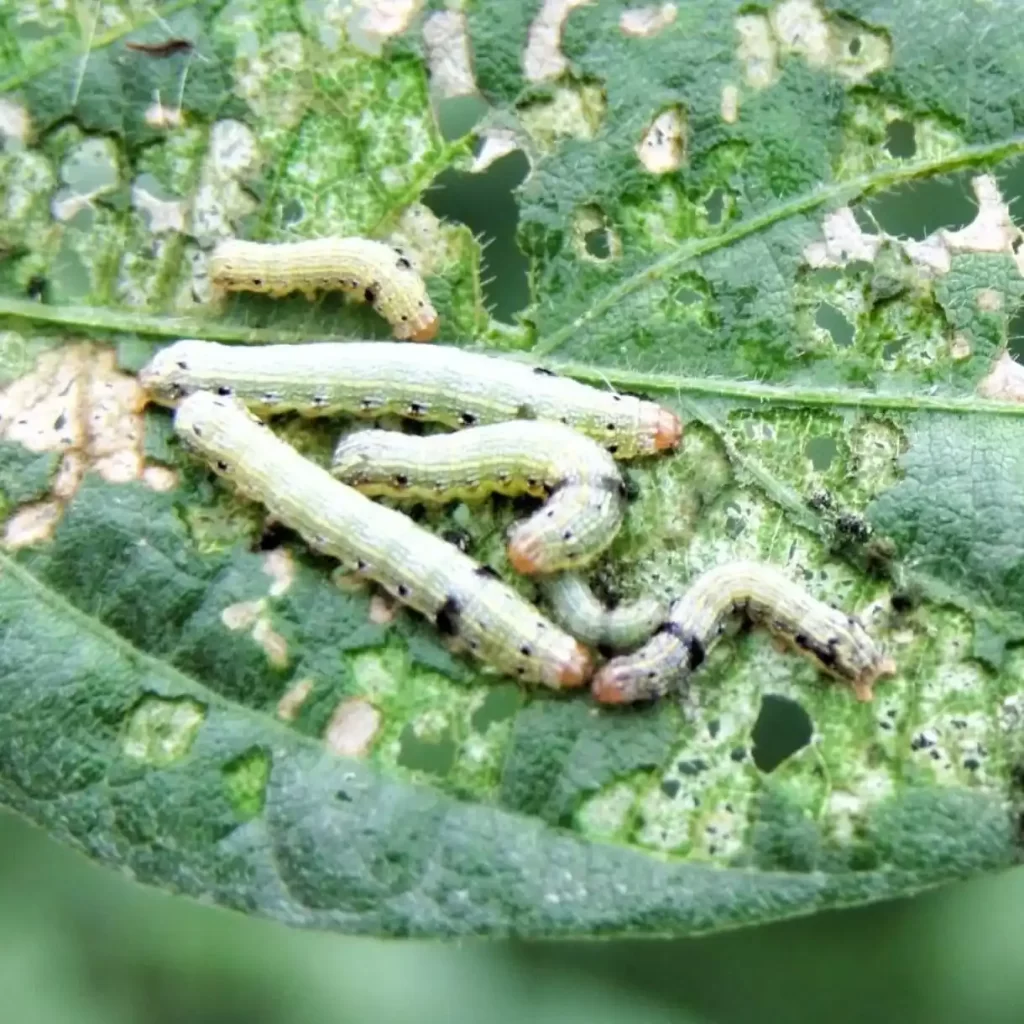
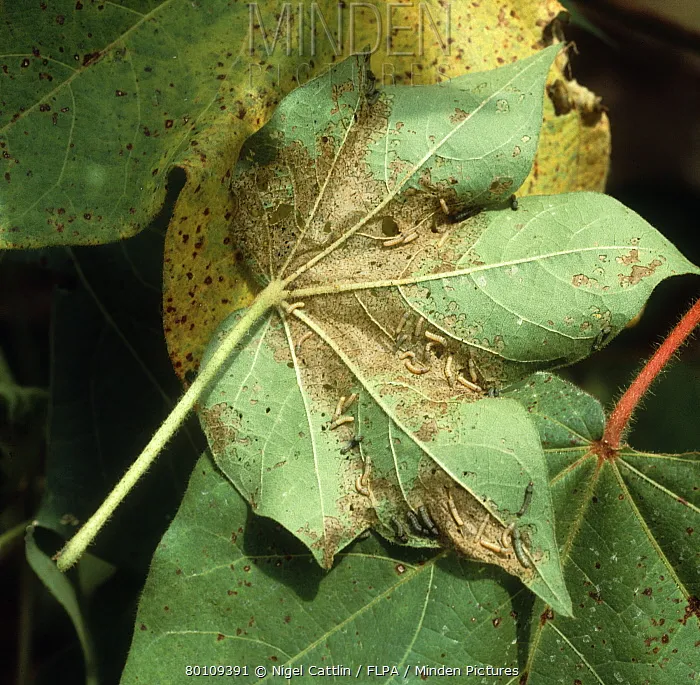
- Reduced Flower and Fruit Formation: Infested plants may produce fewer flowers or fruits, and those that form are often underdeveloped or deformed due to stress and nutrient loss caused by the feeding larvae.
- Moth Activity: Adult moths are nocturnal and may be seen fluttering around crops in the evening. The presence of moths in large numbers often signals the beginning of an infestation.
- Egg Masses: Check the undersides of leaves for clusters of tiny, pale-colored eggs. These egg masses are laid by adult moths and hatch into larvae within a few days. Detecting and removing them early can help prevent infestations from escalating.
- Stunted Plant Growth: Prolonged feeding by larvae deprives plants of essential nutrients and energy, leading to stunted growth and weak stems.
- Yellowing Leaves: Damage to leaf tissues can cause yellowing or browning, which is often mistaken for nutrient deficiencies. It’s essential to inspect closely to differentiate between pest damage and other issues.
Monitoring your crops regularly and understanding these signs can make a significant difference in controlling cotton leafworm infestations effectively. Combining these observations with preventive measures ensures timely intervention to minimize damage.
How to Prevent Cotton Leafworm Infestations
Preventing infestations requires an integrated approach combining cultural, biological, and physical methods:
- Minimize random unnecessary pesticide spraying to favor beneficial bugs that can predate and keep the populations under control.
- Inspect seedlings before planting to eliminate any egg masses or caterpillars.
- Cultural Practices:
- Crop Rotation: Avoid planting the same host crops in consecutive seasons to disrupt the pest’s lifecycle.
- Sanitation: Remove plant debris and weeds that may harbor eggs or larvae.
- Timely Planting: Align planting schedules to minimize overlap with peak pest activity.
- Physical Barriers:
- Netting: Use fine mesh nets to protect crops from adult moths.
- Pheromone Traps: Deploy these traps to monitor and reduce moth populations effectively. Place 1 pheromone trap per acre, 1to 2 m above the ground.
Effective Methods to Get Rid of Cotton Leafworms
When prevention is insufficient, adopting targeted control methods is essential to manage cotton leafworm populations. The following strategies offer a combination of chemical, organic, and integrated techniques to combat these pests:
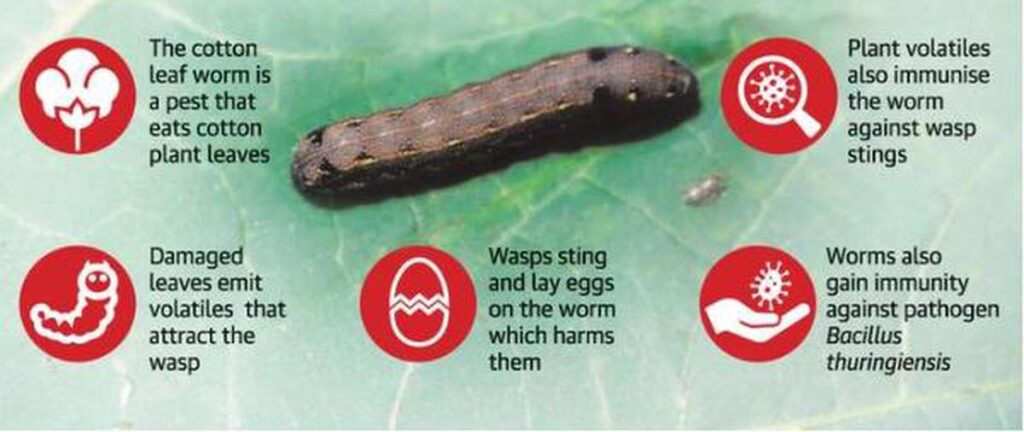
Chemical Control
This pest is resistant to many chemical compounds. Always consider an integrated approach with preventive measures together with biological treatments if available.
- Synthetic Insecticides: Products containing pyrethroids, organophosphates, or carbamates are highly effective against cotton leafworms. These chemicals disrupt the nervous system of the larvae, causing paralysis and death. Always adhere to recommended dosages and application guidelines to ensure safety and efficacy.
- Systemic Insecticides: These chemicals are absorbed by the plant and target pests feeding on treated foliage. Systemic insecticides provide longer-lasting protection but should be used judiciously to prevent resistance.
- Spot Treatments: Focus chemical applications on areas with visible infestations to reduce overall chemical usage and limit exposure to beneficial insects.
Organic and Eco-Friendly Options
- Neem Oil: This natural pesticide disrupts the feeding and growth of cotton leafworm larvae. Apply neem oil as a foliar spray, ensuring thorough coverage of leaves, especially the undersides.
- Bacillus thuringiensis (Bt): A biological control agent, Bt is a bacteria-based pesticide that specifically targets caterpillars without harming beneficial insects. Apply during the early larval stages for optimal results.
- Spinosad: Derived from natural soil bacteria, spinosad is effective against leafworm larvae and has low toxicity to humans and most beneficial organisms.
Biological Controls
- Predatory Insects: Introduce or encourage populations of predatory insects, such as lacewings and lady beetles, which feed on cotton leafworm eggs and larvae. These natural predators can significantly reduce pest populations over time.
- Parasitic Wasps: Species such as Trichogramma lay their eggs inside cotton leafworm eggs, preventing them from hatching. These wasps are available commercially and can be released into infested areas.
- Entomopathogenic Nematodes: These microscopic organisms invade and kill larvae in the soil, disrupting the lifecycle of the pest before it can reach maturity.
Integrated Pest Management (IPM)
- Monitoring and Thresholds: Use pheromone traps to monitor moth populations and determine when intervention is necessary. Implement control measures only when pest numbers exceed economic thresholds.
- Combination Strategies: Combine biological, chemical, and cultural methods to create a comprehensive approach. For example, use pheromone traps alongside targeted insecticide applications and natural predators.
- Record-Keeping: Maintain detailed records of pest activity, interventions, and outcomes. This information helps refine future management strategies.
Timing and Application Best Practices
- Early Intervention: Address infestations during the early larval stages when pests are most vulnerable. Delayed action can result in significant damage and require more intensive control efforts.
- Application Conditions: Apply treatments during calm weather conditions to avoid drift and maximize coverage. Evening or early morning applications are ideal to minimize exposure to non-target species.
- Regular Monitoring: Continuously monitor pest activity even after treatment to ensure effectiveness and detect any resurgence.
By employing these methods thoughtfully and systematically, you can effectively manage cotton leafworm infestations while minimizing harm to the environment and beneficial organisms. The key is to remain vigilant and adaptable, tailoring your approach to the specific conditions and pest pressures in your area.
Managing Large-Scale Infestations
For commercial farmers, managing extensive infestations requires additional strategies:
- Pheromone Traps: Deploy pheromone traps extensively to monitor moth populations and disrupt mating cycles. These traps not only help in understanding infestation dynamics but also reduce the number of viable eggs laid.
- Collaborative Management: Partner with neighboring farms and agricultural extension services to implement area-wide pest management strategies. Collective action ensures synchronized interventions, which are more effective in curbing the spread of the pest.
- Mass Trapping: Utilize mass trapping techniques by placing a large number of pheromone or light traps across infested regions. This approach significantly reduces adult moth populations, preventing further reproduction.
- Aerial Applications: In severely infested areas, aerial spraying of biological or chemical insecticides can provide rapid and extensive coverage. Ensure compliance with safety regulations and environmental guidelines to minimize non-target impacts.
- Crop Zoning: Practice crop zoning by separating vulnerable crops from each other to slow down pest spread. Strategic planting patterns and buffer zones can reduce the pest’s ability to migrate across fields.
- Use of Resistant Varieties: Plant pest-resistant crop varieties where available. These varieties have natural defenses that deter or withstand cotton leafworm damage, reducing reliance on chemical controls.
- Data-Driven Decisions: Leverage technology like remote sensing, drones, and pest prediction models to identify hotspots and prioritize interventions. Advanced analytics enable more precise and timely decision-making.
- Periodic Evaluation: Regularly assess the effectiveness of the chosen control methods through field surveys and data analysis. Adjust strategies based on observed outcomes to enhance efficiency and sustainability.
- Community Awareness Programs: Educate local communities about cotton leafworm management practices to encourage active participation in pest control efforts. A well-informed farming community can collectively contribute to reducing infestation levels.
By adopting these comprehensive measures, commercial farmers can effectively tackle large-scale cotton leafworm infestations while mitigating environmental and economic risks. Consistency and collaboration are key to long-term success.
Frequently Asked Questions
What do Egyptian cotton leafworms eat?
Egyptian cotton leafworms (Spodoptera littoralis) feed on a variety of crops, including cotton, tomatoes, beans, lettuce, peppers, and other vegetables and their stems, buds, flowers and fruits.
What is the common name for Spodoptera litura?
The common name for Spodoptera litura is the Tobacco Cutworm or Oriental Leafworm.
What is the host of Spodoptera littoralis?
Spodoptera littoralis hosts include cotton, tomatoes, potatoes, peppers, beans, and other vegetables, making it a polyphagous pest.
What is the life span of Spodoptera litura?
The life span of Spodoptera litura varies but typically ranges from 30 to 50 days, depending on environmental conditions.
What are the marks of identification of Spodoptera litura?
Key identification marks include larvae with greenish or brownish bodies, longitudinal white and dark stripes, and adult moths with forewings displaying wavy patterns and hindwings that are pale with dark edges.
That’s It
Managing cotton leafworm infestations requires a proactive and integrated approach. From early detection to employing cultural practices, biological controls, and targeted chemical treatments, every step plays a crucial role in minimizing damage and protecting crop yields. Leveraging tools like pheromone traps and encouraging natural predators not only helps in pest control but also promotes ecological balance.
By remaining vigilant, tailoring strategies to local conditions, and adopting sustainable practices, farmers and gardeners can significantly reduce the impact of cotton leafworms. A well-rounded understanding of this pest’s behavior and control methods ensures healthier crops, increased productivity, and long-term agricultural success. Take charge today to protect your plants and secure your harvest against the threats posed by cotton leafworms.
